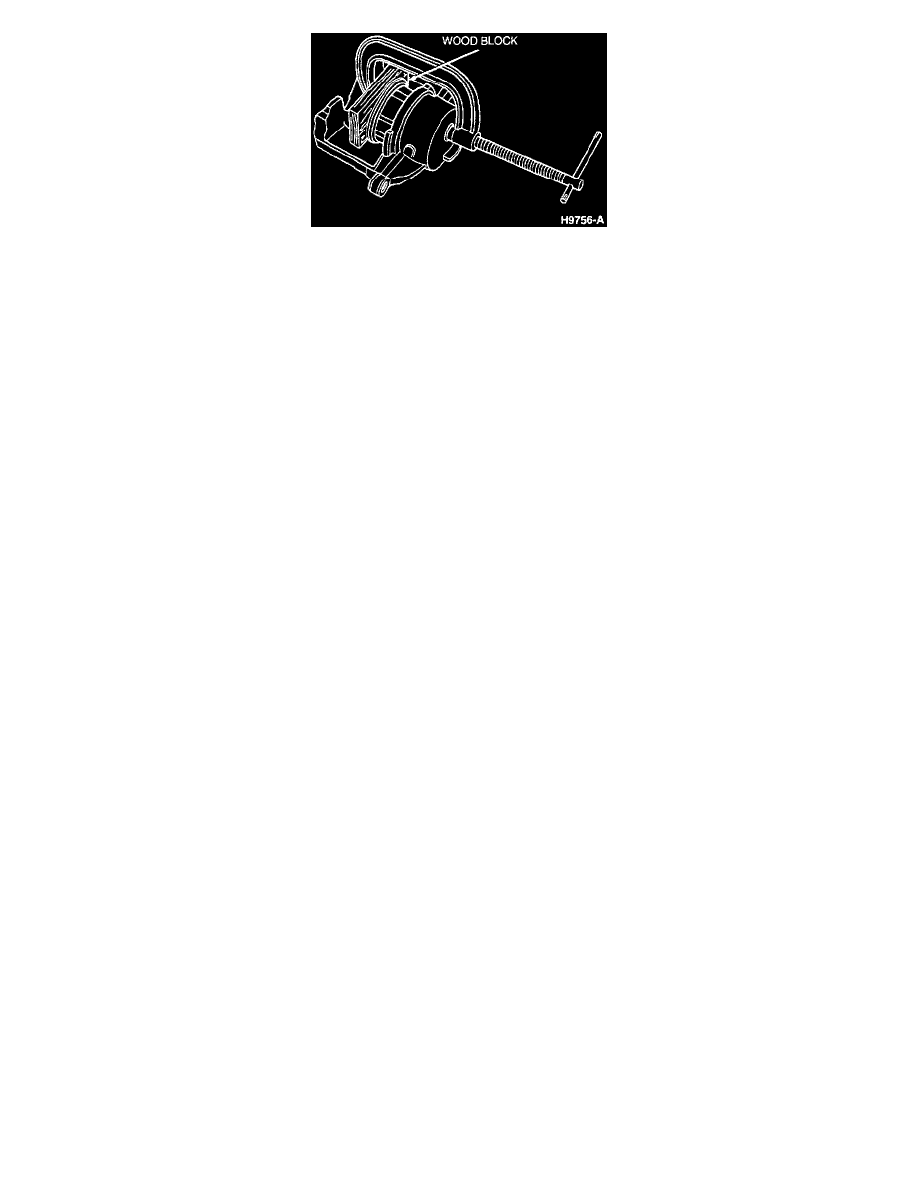Sable V6-183 3.0L DOHC VIN S MFI (1997)

Retracting Caliper
1. Compress caliper piston fully in caliper piston bore.
2. Make sure inner and outer shoes are properly positioned in front disc brake caliper anchor plate. Make sure front wheel disc brake shoe insulators
are attached to the brake shoe plate. Make sure lining material is facing front disc brake rotor. Install disc brake caliper over front disc brake rotor
and brake shoes and linings.
3. Install rear brake pin retainer through front disc brake caliper holes into disc brake caliper locating pins and hand start.
NOTE: To make sure correct disc brake caliper is installed on correct side of vehicle. The bleeder screw should be on top of disc brake caliper
when assembled on vehicle.
4. Tighten two brake pin retainers to 31-38 Nm (23-28 ft. lbs.).
5. Remove plug and install front brake hose on disc brake caliper with a new copper washer on each side of fitting outlet. Insert retaining bolt
through washers and fitting. Tighten to 41-54 Nm (31-39 ft. lbs.).
NOTE: Always re-install rubber bleed screw cap after bleeding.
6. Bleed the serviced disc brake caliper.
MANUAL BLEEDING
NOTE: When the brake system is emptied or partially emptied, fluid may not flow from the bleeder screws during normal bleeding. It may be
necessary to prime the system by performing the Master Cylinder Bleeding procedure. See: Brake Bleeding/Service and Repair/Manual
Bleeding
1. To bleed brake system, position suitable box wrench on bleeder fitting. Attach rubber drain tube to bleeder fitting. The end of tube should fit
snugly around bleeder fitting.
2. Submerge free end of the tube in container partially filled with clean brake fluid and loosen bleeder fitting approximately three-quarters of a turn.
3. Have assistant push brake pedal down slowly through its full travel. Close bleeder fitting and return the brake pedal to full release position.
4. Repeat Steps 2 and 3 until air bubbles cease to appear at submerged end of bleeder tube.
5. When fluid is completely free of air bubbles, secure bleeder fitting and remove bleeder tube.
6. Refill brake master cylinder reservoir after each system is bled and install master cylinder reservoir cap and gasket. Make sure diaphragm type
gasket is properly positioned in master cylinder reservoir cap. When bleeding operation is completed, fluid level should be between MAX line and
4.0 mm (0.16 inch) below.
7. If necessary, Repeat this procedure for the opposite front caliper.
8. If necessary, Repeat this procedure for the opposite diagonal system.
9. After disc brake service, make sure disc brake pistons are returned to their normal positions and shoe and lining assemblies are properly seated.
This is accomplished by applying brake pedal several times until normal pedal travel is established.
10. Check pedal feel. If brake pedal feels spongy repeat bleed procedure, perform additional bleeding procedures, Refer to Brakes - Service and
Repair, or perform diagnosis procedure. See: Brake Bleeding/Service and Repair See: Testing and Inspection/Symptom Related Diagnostic
Procedures
11. Fill brake master cylinder with specified brake fluid to between MAX line and 4 mm (0.16 inch) below MAX line on reservoir. Use High
Performance DOT-3 Motor Vehicle Brake Fluid .
CAUTION:Failure to tighten lug nuts in a star pattern may result in high rotor runout, which will speed up the development of brake roughness,
shudder and vibration.
12. Install wheel and tire assembly on vehicle. Tighten lug nuts to 115-142 Nm (85- 104 ft.lbs) using Accutorq Lug Nut Socket or equivalent on a 1/2
inch air impact wrench, or use a torque wrench.
13. Lower vehicle and road test.
